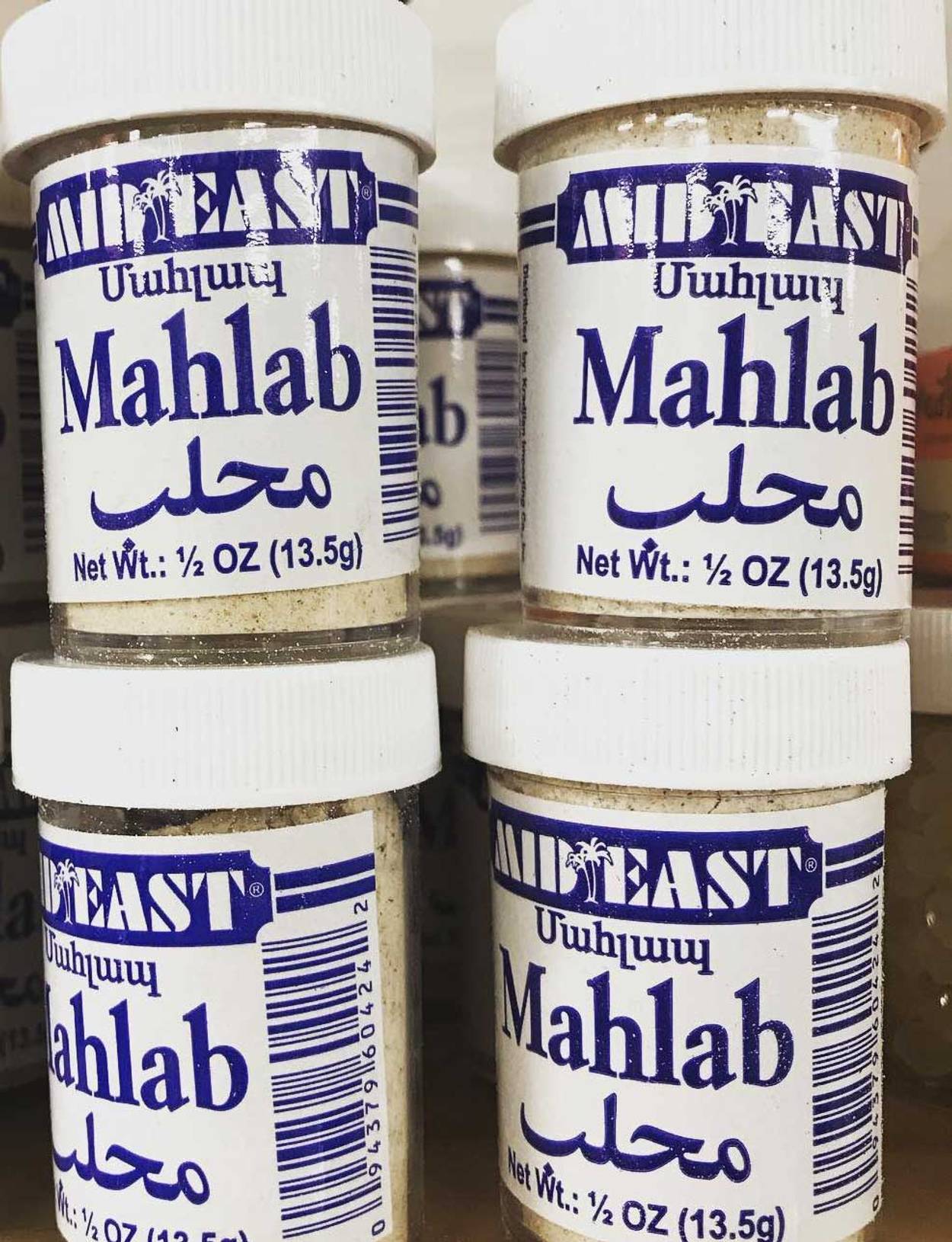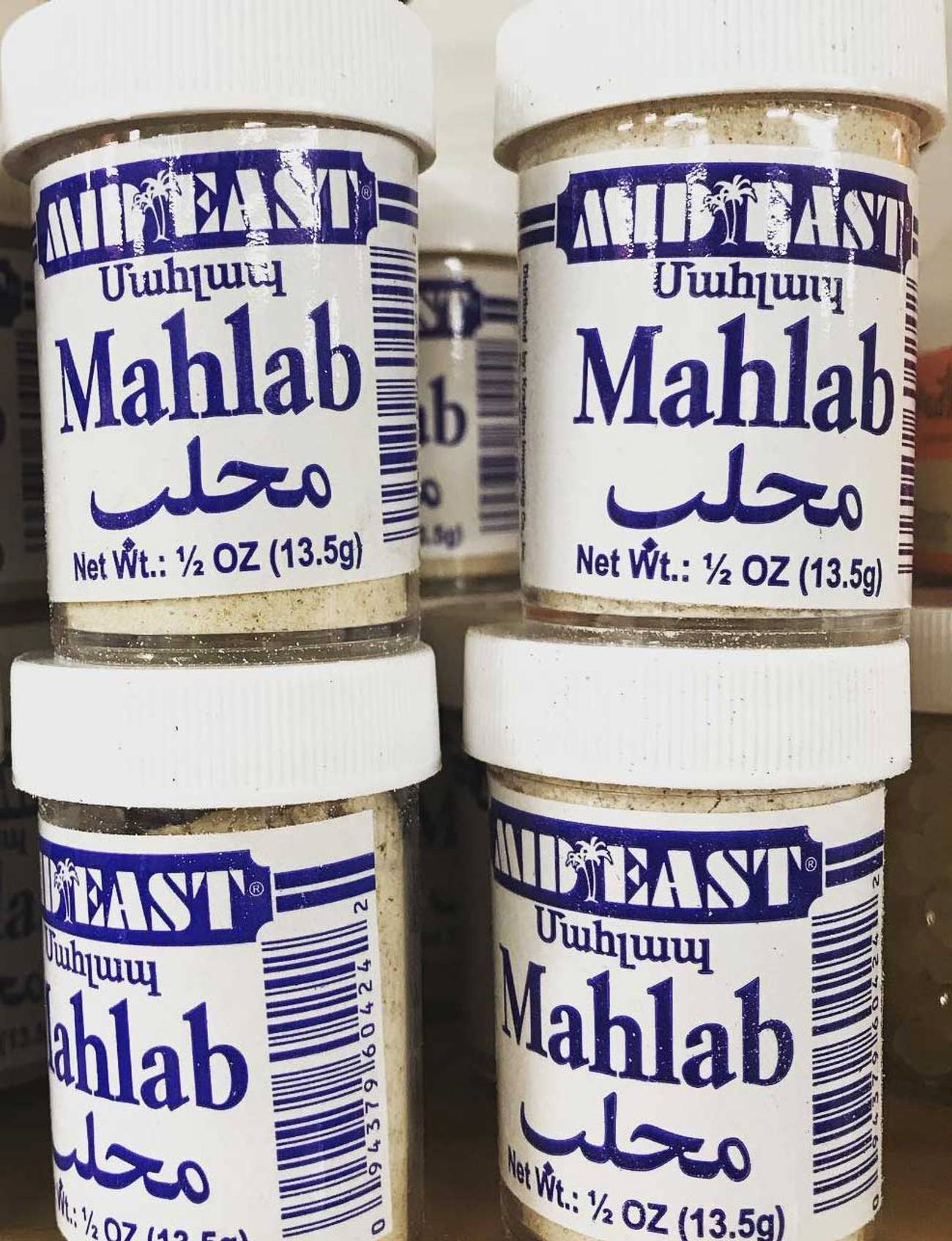A Fragrant Addition to the American Kitchen
Mahlab, a spice most often used in baked goods, has brought its gentle perfume from the Mediterranean and the Middle East around the globe




In recent years, thanks to the ever-growing popularity of Middle Eastern and Israeli cuisine, the mainstream American kitchen has embraced a bazaar’s worth of spices and flavors. But within this expanded pantry, which now includes things like za’atar and pomegranate molasses, harissa and rosewater, mahlab—a fragrant spice most often used in baked goods—has remained relatively obscure. That may be about to change.
Mahlab originates from St Lucie cherry trees that grow wild throughout the Middle East and Southern Europe. According to the Illustrated Cook’s Book of Ingredients, “The tree bears small, thin-fleshed black cherries; the soft-beige kernels from the cherry stones are dried to yield the spice.” When ground, the lightly bronzed powder has a fairytale quality—a pile of Rumpelstiltskin’s straw-turned-gold—and a gentle perfume reminiscent of both cherries and almonds.
“Mahlab kernels are proof that sometimes the better ingredient is found inside the fruit,” writes master spice blender Lior Lev Sercarz in his definitive guide, The Spice Companion. “I am not sure where the idea came about to use the kernel of this distasteful sour cherry, but I’m glad someone thought of it.”
Prized across Greece, Turkey, Syria, Iran, and other Mediterranean and Middle Eastern countries, mahlab is often incorporated into breads and pastries. Syrian Jews turn to mahlab when making ka’ak, a savory, ring-shaped cookie that is typically served alongside coffee or tea. “Ka’ak is no boring teatime biscuit,” writes Poopa Dweck in Aromas of Aleppo. “It has a great deal of flavor and tang.” That would be the mahlab (and the anise seed, called yansoon in Arabic) talking. “Ka’ak is the only time I use mahlab,” said Renee Saff, a Syrian Jewish grandmother who lives in Brooklyn. “It’s my mother’s recipe, so I never questioned it.”
Mahlab also appears in Syrian string cheese—the plump, braided ropes of stretchy white cheese (similar to mozzarella) that come speckled with black nigella seeds. Not all recipes for the cheese, which is still commonly made at home, include the powdered kernel. But those that do benefit tremendously from its floral presence.
Chefs have begun to notice. Liliana Myers, who is the pastry chef at Safta, Alon Shaya’s modern Israeli restaurant in Denver, started working with mahlab after a staff research trip to Israel. “I tried some cookies made with it, and I immediately noticed the flavor,” she said. “I don’t love almond extract, which can be a little cloying. Mahlab is like the better, more subtle version of that flavor.”
Like many Middle Eastern cooks, Myers incorporates mahlab powder into Safta’s date-filled ma’amoul shortbread pastries. She also uses it in less traditional ways: in a flourless almond cake served on Passover and in an Ottolenghi-inspired Persian love cake offered for Valentine’s Day. “Basically whenever a recipe calls for almond extract, I use mahlab,” she said.
Molly Yeh, the food blogger and host of The Food Network show Girl Meets Farm, also puts mahlab to creative use. “I bought some at the Levinsky Market while visiting Tel Aviv years ago,” she said. “I see it as a warmer, cozier almond flavor that also runs in the same circles as cinnamon. It’s a very good, soft spoken loyal friend to everything else that’s already in the standard baking pantry.” A recipe for a chocolate frosted almond butter cake on Yeh’s blog encourages readers to add a pinch of mahlab for “nuttiness.” Another for chewy sugar cookies suggests that mahlab opens up a “new frontier” of flavor for baked goods.
Zahav chef Michael Solomonov recommends keeping mahlab on hand in the freezer for mixing into breads and pastries. Meanwhile, in The Spice Companion, Sercarz shares a variety of everyday applications for the extraordinary spice. “Season oats, raisins, sunflower seeds, and cranberries with coarsely ground mahlab to make a topping for yogurt,” he writes. He also suggests topping fresh cherries with whipped cream and ricotta flavored with lemon zest, sugar, and mahlab.
Like saffron and other more precious spices, mahlab is rather expensive. But most recipes only call for a small amount, allowing a container to last for multiple bakes. It is sold in specialty food shops (such as Kalustyan’s and Sahadi’s) and via online retailers like Snuk Foods, both pre-ground and as whole kernels. Of course, most chefs and cookbooks recommend buying the kernels whole and grinding them at home in order to capture the spice’s full aroma.
Mahlab, as Yeh said, tends to be a team player—a strong supporting character rather than the star of the show. So whether or not the beguiling spice will ultimately enjoy a larger moment in the sun currently shining on Middle Eastern and Israeli cuisine remains to be seen. But for home bakers and cooks hungry to up their pastry game, something sweet awaits.